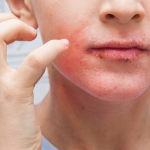Skin and its derivatives (hair, nails, sweat and oil glands) are the body’s first line of defense against injury, bacteria, and harmful substances. Our skin protects us from harmful substances, regulates body temperature, produces vitamin D from sunlight and helps with metabolism. As the largest organ on the body, it makes up about 1/7th of our body weight.
Like other organs, skin is affected by disease. Some skin diseases such as melanoma can be deadly, which is why timely assessment and treatment is of the essence. Other afflictions of the skin such as acne, eczema or psoriasis may not be deadly, but they certainly cause pain and suffering – both physical and mental – if left untreated.
Melanoma Rates Rising; Dermatologist Availability Decreasing
Skin cancer screening and diagnosis is taking longer in Canada, even as rates of melanoma keep rising due to what experts say is a shortage of dermatologists. Skin cancer can spread and become life threatening within months, but tens of thousands of Canadians face waits of a year or longer for appointments and treatment, according to Melanoma Canada.
While wait times in urban areas are unacceptably long, in rural areas there are far fewer dermatologists to serve the population. As of May 2024, there were 770 dermatologists in Canada, with 5.6 per 100,000 in urban areas compared to 0.6 per 100,000 in rural areas.
For people in rural areas in particular this can mean prolonged waiting times, missed or delayed diagnoses, and worse overall patient outcomes. With the disparity in access, patients in rural areas are also often faced with logistical and financial barriers in accessing care.
Virtual Dermatology
Enter virtual dermatology, a rapidly evolving approach to care that does not depend on in-person visits and takes advantage of the power of AI and technology to deliver meaningful, timely care. Virtual dermatology (also called teledermatology) uses digital images and telecommunication technologies to assess, diagnose, monitor, or triage skin conditions without the patient being physically present.
The benefit of virtual dermatology is growing and today includes:
- Remote Monitoring: Apps and platforms allow patients to track changes in skin conditions over time, providing valuable historical data for dermatologists during consultations.
- Faster Diagnoses: By reducing wait times and enabling swift triage, virtual consultations and asynchronous tools help prioritize urgent cases while offering timely care for non-emergent issues.
- Improved Accessibility: Virtual services, dedicated virtual clinics and advanced technological tools reduce the impact of dermatologist shortages, particularly in rural or underserved areas.
Here’s a detailed look at how various aspects of technology contribute to this field.
Smartphone Apps
Many of the most recently released smartphones come equipped with powerful cameras offering high-resolution imaging that can capture skin details with clinical-level precision. Some apps may be used in conjunction with your dermatologist, while others facilitate swift evaluation, feedback and ongoing tracking for some skin conditions.
Here are some apps in market today:
- Miiskin is an AI-powered app designed to help users track skin changes, such as moles and lesions, over time. It allows for side-by-side photo comparisons, offers full-body skin mapping, and connects users with dermatologists for asynchronous consultations.
- MDacne: This app analyzes selfies to identify acne severity and offers customized treatment kits. It combines AI and dermatological expertise to provide targeted skincare solutions.
- First Derm and iDoc24: Both apps allow users to upload skin images for expert evaluations. They provide rapid feedback and potential treatment options for various skin conditions.
Virtual Dermatology Clinics
With many chronic skin conditions suitable for virtual care, many Canadians who have waited months for a dermatology appointment will be happy to hear that dermatology-specific virtual clinics are opening. Unlike family doctors, dermatologists are able to see patients virtually and charge provincial medicare an appropriate amount.
Operating in many provinces, DermCafé is the first national Virtual Dermatology Centre in Canada. It’s roster of dermatologists offers treatment – usually within one week – for skin conditions that can be treated virtually. A referral is needed however they do have a family Doctor first that can facilitate if you do not have a family doctor or Nurse Practitioner.DermCafé accepts OHIP, UHIP, MSP, AHS, Morcare & more for payment.
Maple offers virtual healthcare services across Canada including consultation with a Canadian-licensed dermatologist in 24 hours or less from your phone, tablet, or computer – no referral needed.
Some services are covered by provincial healthcare plans. Other private healthcare plans, including employee benefits or healthcare spending accounts cover Maple’s online doctor consultations and memberships. Check with your insurance provider to find out more.
RemoteDerm is a teledermatology platform that delivers the highest quality medical & cosmetic skin care with board certified dermatologists. It offers care for many skin conditions; including acne, psoriasis, eczema, rosacea, melasma, wart, skin infection, hair loss, nail disease, and more.
Three levels of care are offered, all of which are paid for out of pocket. Patients can choose between being seen in 72 hours, 24 hours or immediately, depending on your budget. Prices range from $114.99 to 299.99. The cost may be reimbursed by your private insurance company or healthcare spending account if applicable.
AI-Powered Programs
It’s fantastic to see that solutions are cropping enabling Canadians to access board-certified dermatologists in a timely manner. Another powerful area of evolution of care in dermatology – both medical and cosmetic – is Artificial Intelligence (AI).
The fact is, AI-powered diagnostic tools analyze, classify and learn from images of skin lesions with a level of detail and accuracy that will inevitably rival the trained eye of a dermatologist. The massive learning capacity of AI allows it to recognize subtle differences in lesion features such as size, texture and shades that far surpasses that of humans. If you are on the waitlist for a dermatological appointment, prepare for your meeting questions to uncover how your new specialist will leverage virtual tools and AI to care for you.
Google Health is piloting AI tools for melanoma detection and more, particularly in regions with limited dermatological access. By integrating AI with user-friendly interfaces, these tools can assist in identifying skin conditions early and efficiently.
This is an exciting time to be taking care of any skin issues that ail you as technology and virtual medicine revolutionize dermatological care. Make sure you take advantage of everything on offer to quickly address any skin issues or cosmetic goals you may have. And make sure you subscribe to The Health Insider for more updates on the future of dermatology.
~Read more from The Health Insider~
- Is It Dry Skin or Eczema? Here’s How to Tell the Difference and What to Do About ItLearn to tell dry skin from eczema, discover triggers, and explore safe products and treatments for healthier, happier skin.
- How To Transition Your Skincare From Summer To The Harsh Canadian WinterSwitching to winter skincare? Here’s what to keep, what to skip, and how to protect your face and body from dryness.
- Vitamin C and Collagen: The Duo Behind Healthy Skin, Strong Joints, and Faster HealingDiscover how vitamin C fuels collagen production to support healthy skin, strong joints, and tissue repair.
- Skin Hydration for the Nation: Why Moisturizing Matters for CanadiansFrom flaky hands to chapped feet, the Canadian winter spares no one. Explore easy skincare fixes, lifestyle tweaks, and moisturizer must-haves for winter skin.
- Dermatology Reinvented – Virtually No More Wait TimesWaiting to see a dermatologist can be risky. Learn how virtual medicine is a game changer, for both wait times and standard of treatment.
- 11 Top Summer Hair and Skin Tips for Menopausal WomenHave you noticed that your hair and skin are suffering as you go through menopause? Read on to learn how to keep both radiant this summer.
The information provided on TheHealthInsider.ca is for educational purposes only and does not substitute for professional medical advice. TheHealthInsider.ca advises consulting a medical professional or healthcare provider when seeking medical advice, diagnoses, or treatment. To read about our editorial review process click here.
















